
Wood Pellet plant
RICHI 2.5t/h wood pellet plant system includes with every section and design you need to process any wood waste and biomass, including wheat, straw, alfalfa, corn, rice husks, and more.
It can be used to produce pellets of all kinds, allowing you to speed up your production process and improve your bottom line. (You can use a single raw material or multiple raw materials, but the design of the process will be different.)
2.5 T/H Wood Pellets Plant Price: 50,000 – 350,000 USD

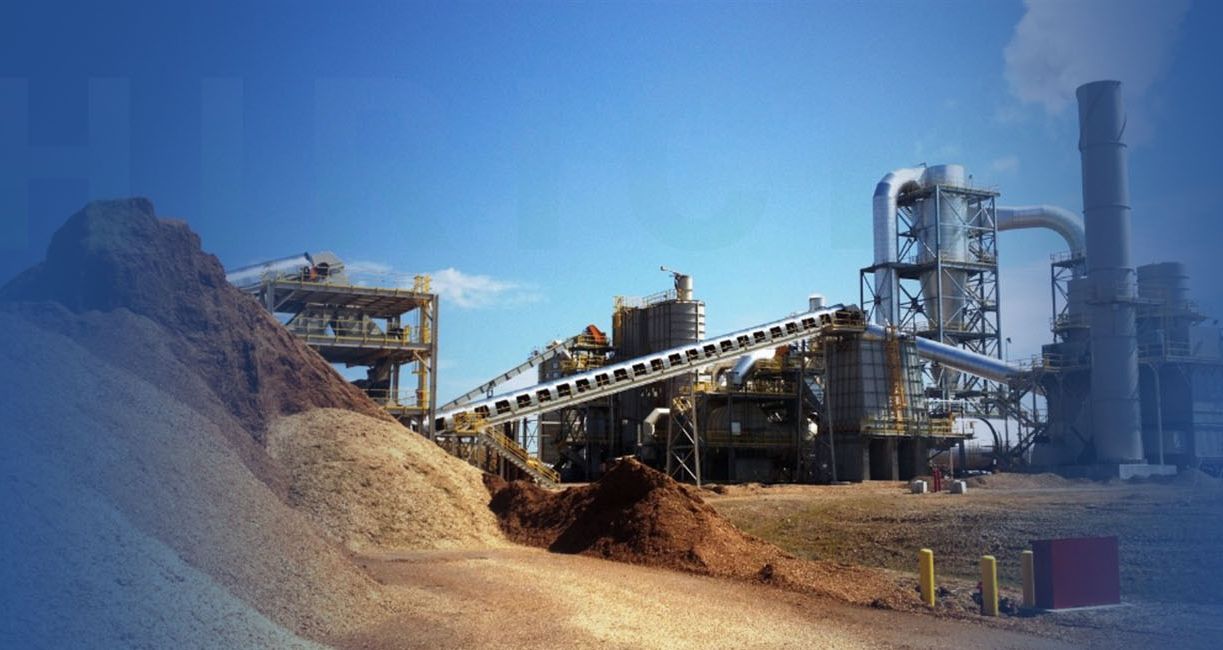
2.5T/H Wood Pellet plant Solution

Based on different materials, we have different and suitable wood pellet plants solutions. The whole wood pelleting plant process include Material Crushing Section, Drying Section, Pelletizing Section, Pellets Cooling Section and Pellets Packing Section. The production capacity can be 300kg/h to max 90ton/h,
Whether you want to use this plant as a wood pellet production plant, a biomass pellet production line, this solution will ultimately serve as an all-in-one and complete pellet plant that suits anybody’s needs.
01 Raw Materials:
Wood (Hardwood, Softwood or Their Mixture), Sawdust, Straw, Bamboo Waste, EFB (Empty Fruit Bunch), Coconut Shell, Sugarcane Bagasse, Napier Grass, and many other biomass waste.
02 2.5 T/H Wood Pellet Plant Cost
50,000 – 350,000 USD
Wood Pellet plant Projects

10T/H
Wood pellets plant in united states

2T/H
wood pelleting plant for sale poland
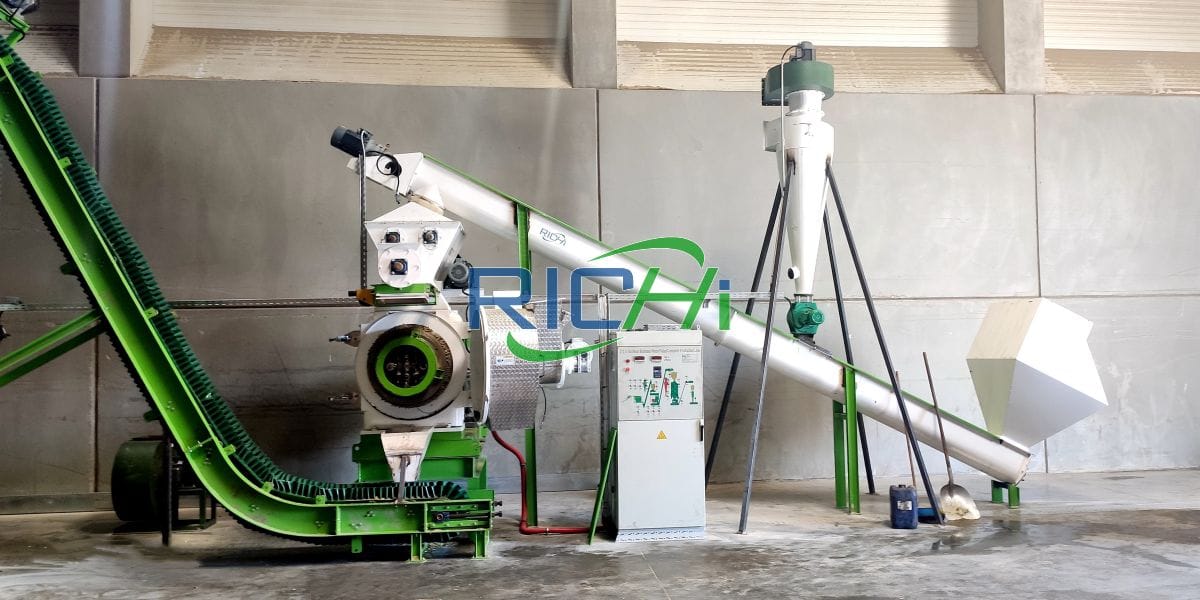
2-2.5T/H
wood pelletizing plant in romania
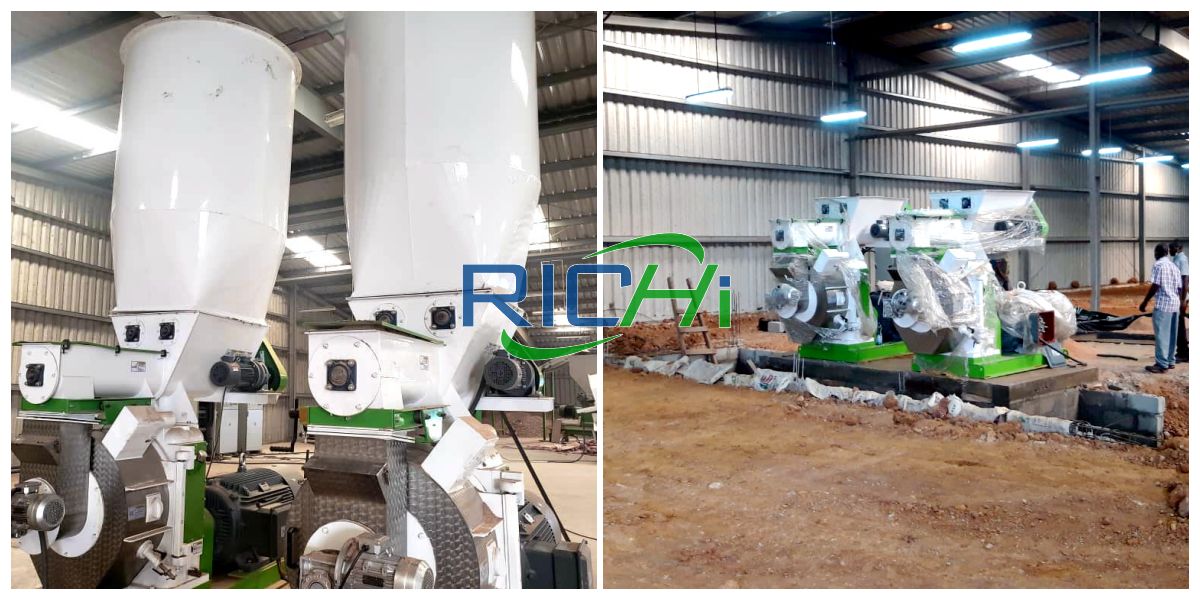
5T/H
wood pellet production line in austria

2-3T/H

2.5T/H Wood Pellet Plant Project Report
There are huge business potentials to start wood pellet mill plant. Not only can one outsource to individuals or small communities, but also big corporations and industries. The selection of the right wood pellet equipment and technology for a wood pelleting plant is critical when establish your own biomass fure wood pellet manufacturing business.
Next, I will list two wood pellet processing plant projects we have done for you, hoping to help you.
Case 1: 2.5T/H Wood Pellet Plant project
The total investment of this 2.5tph wood pellets plant project is 300,000 US dollars, the total area is 3200 square meters, and the total construction area is 3020 square meters. The project rents the completed factory buildings and office buildings as the business place for production and office.
This project uses processes such as crushing, compression molding, and packaging to produce biomass pellets. The project is expected to produce 6,000t/a of biomass pellets per year. (Maybe you are interested in: 4T/H wood pelleting plant)
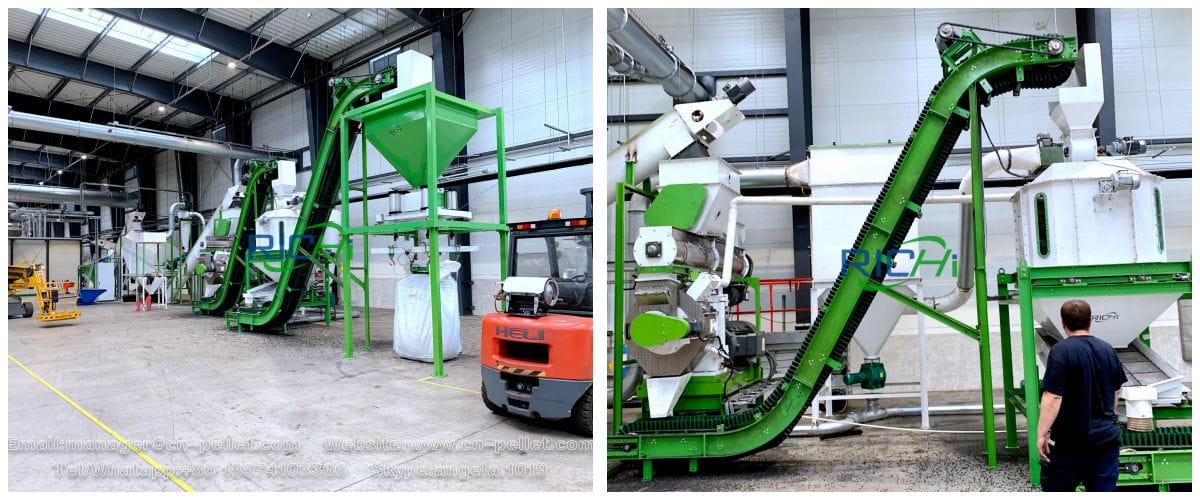
Main buildings
| Building name | Site area (m²) | Number of building floors | Building area (m²) | Remarks |
|---|---|---|---|---|
| Production hall 1 | 300 | 1 | 300 | Factory height 5 meters |
| Workshop 2 | 300 | 1 | 300 | Factory height 5 meters |
| Raw material storage area 1 | 480 | 1 | 480 | Factory height 5 meters |
| Raw material storage area 2 | 480 | 1 | 480 | Factory height 5 meters |
| Finished product storage area 1 | 680 | 1 | 680 | Factory height 5 meters |
| Finished goods storage area 2 | 680 | 1 | 680 | Factory height 5 meters |
| Office | 100 | 1 | 100 | Factory height 4 meters |
| Roads and greening in the factory | 180 | / | / | / |
| Total | 3200 | 3020 | / |
- Production workshop 1&2: Located in the southeast corner of the project, it is equipped with production equipment such as crushers and pellet machines, and the areas of crushers and pellet machines are sealed.
- Raw material storage area 1&2: Located on the west side of the project production workshop 1, it is enclosed and covered on all sides, and a ventilation system is installed in the workshop.
- Finished product stacking area 1 & 2: Located on the north side of the project production workshop 1, it is a single-story factory building, enclosed and covered on all sides, and a ventilation system is installed in the factory building.
Product plan and scale
The product of this 2.5t/h wood pellet plant project is biomass pellets. Its products and their estimated production scale are shown in the table below.
| Product name | Annual output (t/a) | Specification | Storage location |
|---|---|---|---|
| Biomass pellets | 6000 | Φ8mm | Finished product storage area 1, finished product storage area 2 |
Product output accounting:
This project uses 4 pellet machines, each with a production capacity of 500-700kg/h, and the production time of this project is 2400 hours/year. After calculation, the production equipment of this project can meet the production capacity requirements of this project. In the actual production process, the product output is adjusted according to the impact of customer orders. Therefore, the production equipment and production capacity of this project match.
Consumption of raw and auxiliary materials
| Name of raw and auxiliary materials | Annual usage t | Maximum storage capacity t | Status/store method | Remarks |
|---|---|---|---|---|
| Wood scraps | 6000.41 | 200 | Solid state stacking | Dry wood, sourced from wood processing enterprises in the surrounding and counties without painting, gluing, and anti-corrosion treatment, only left over after sawing, planing, milling, etc., the wood type is hard miscellaneous wood, and the wood does not contain Toxic and hazardous substances |
Amount of raw and auxiliary materials:
The raw materials used in this 2.5t/h wood pellet plant project are wood scraps. During the production process, the raw materials will be lost due to the formation of dust due to crushing, pressing and molding processes. Pollution production coefficient is 6.69×10-4t/t-product), that is, the loss is 4.014t.
About 90% of the lost dust is collected into the pulse bag filter for treatment, and most of it is collected as raw and auxiliary materials after being treated by the pulse bag filter, and the dust that has not entered the pulse bag filter is discharged in the workshop without organization.
Most of them are settled on the workshop floor by gravity and collected by the construction unit as raw and auxiliary materials for reuse. Through calculation, the amount of recycled dust is 3.6046t.
It can be calculated that 6004.014 tons of raw materials are needed to produce 6000 tons of biomass pellets. Among them, 3.6046 tons of raw materials are recycled dust, so the annual consumption of raw materials is 6000.41 tons.
The villages near this project are mixed industrial and residential villages, and most of the industries are wood processing industries. Therefore, it is very convenient for customers to purchase raw materials.
Equipment for 2.5T/H Wood Pellet Plant
| Name | QTY | Model/Specification | Purpose |
|---|---|---|---|
| Wood sawdust crusher | 2 | 8MM | Crushing |
| Wood Pelletizer Machine | 4 | MZLH350 | Press forming |
| Conveyor belt | 8 | 8M | Transport |
| Forklift | 2 | CPC3.5T | Transportation |
2.5T/H Wood Pellet Plant Process Design
- ①Crushing: Use a forklift to put the materials temporarily stored in the raw material storage area into the hopper, and the materials enter the crusher for crushing to obtain crushed materials with a particle size of less than 5mm;
- ②Compressing and molding: The pulverized material is conveyed into the pellet machine through a closed conveyor belt. After being pressed by a granulator, a biomass shaped granule product with a diameter of 8mm and a length of about 20-40mm is produced;
- ③ Packing: The compressed granular products are discharged from the discharge port and packed into bags. (Maybe you are interested in solution: 1.5-2T/H wood pellet line)
Labor quota and working hours
The 2.5t/h wood pellet plant project plans to have 5 employees, and there are no staff canteens and dormitories in the project. The working system of this project is one shift system, each shift works 8 hours, and the annual working time is 300 days.
Power supply system
The electricity used in this project is connected from the local main power supply line, and the annual electricity consumption is estimated to be about 500,000 kw·h.
Heating system
The project does not use boilers and backup generators, and all production equipment uses electric energy.
Layout of 2.5T/H Wood Pellet Plant
In the project factory area, the flow of logistics, human flow and information flow in the production area is clear and clear, without crossing and interfering with each other.
The layout of the production line conforms to the logistics direction of the production process, and the production area, raw materials, finished product storage area and office area of the project are clearly divided, to facilitate production management and product storage. In summary, the layout of this project is reasonable.
Case 2: 2.5T/H Wood Pellet Plant Project
The client company was established on July 19, 2018, and is mainly engaged in the production and sales of biomass pellet fuel. There are some furniture factories and wood factories around this project, and waste wood will be produced in the production process of furniture factories and wood factories.
The supply of raw materials for this project can be ensured. The raw materials of this project are transported in by truck, and are directly unloaded in the raw material storage area, and the waste wood is transported in bulk. All raw materials are stored in the raw material storage area for use (usually temporarily stored for 2 days).
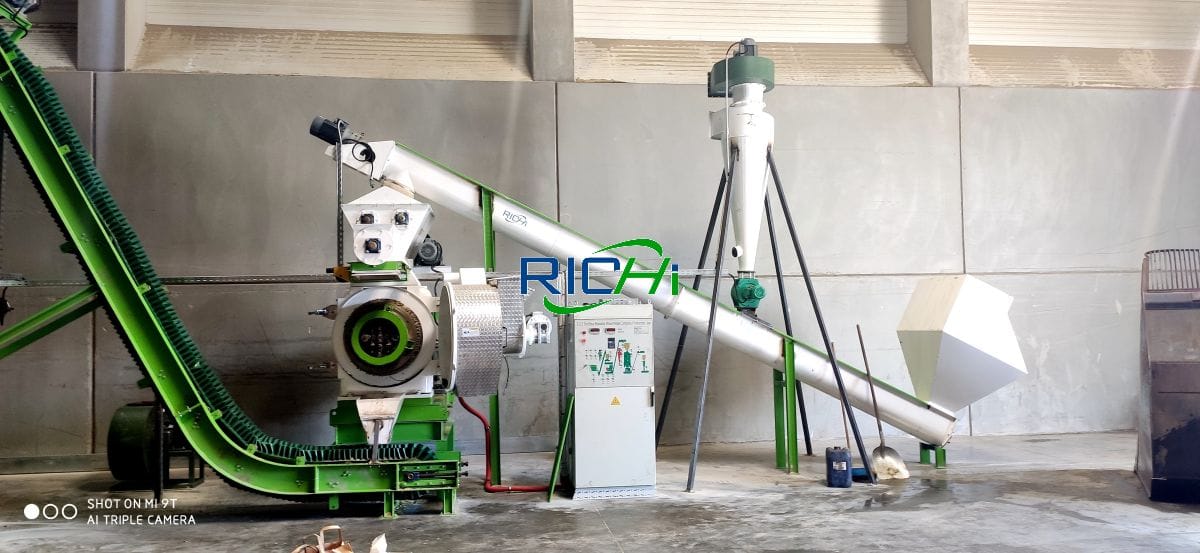
In view of the large market potential of biomass briquette fuel production, combined with its own capital and technical advantages and the advantages of human resources around the project area, the customer complied with the market demand, took advantage of its own strength and advantages, rented an idle factory building, and purchased a granulator , Crusher, mill and other equipment 17 sets.
Product solutions
The total investment of the 2.5t/h wood pellet plant project is 230,000 US dollars. After the project is completed, it will form an annual production capacity of 12,000 tons of biomass pellets.
| Product name | Design Scale | Year run time |
|---|---|---|
| wood pellets | 12000t/a | 4800h |
- Note: The number of employees in the construction project is 10 people, board and lodging are provided in the factory, two shifts are implemented, each shift works for 8 hours, and the annual working time is 300 days, and the annual working time is calculated as 4800 hours. (Maybe you are interested in solution: wood pellet production line)
Layout of 2.5T/H Wood Pellet Plant
The project leases an existing factory building of 4,000 square meters, and sets up production workshops, canteens, offices, and toilets. The production workshop is located on the west side of the factory area, the canteen and office are located on the east side of the factory area, and the bathroom is located on the north side of the factory area.
Main Raw and Auxiliary Materials
| Name | Annual consumption (t/a) | Storage method | Source | Remarks |
|---|---|---|---|---|
| Scrap wood | 12004 | warehouse stacking | Outsourcing | Dry material |
Equipment for 2.5T/H Wood Pellet Plant
The main production equipment of the 2.5 tons per hour wood pellet project is shown in the table below:
| Device Name | Specifications And Models | QTY |
|---|---|---|
| Wood Pallet Crusher | / | 1 |
| Wood Sawdust Grinder | SFSP80-5 | 1 |
| wood pellet extruder machine | MZLH420 | 2 |
| Conveyor Belt | 4080C | 7 |
| Loader | 940 | 1 |
| Forklift | CPC | 1 |
| Sieving Machine | / | 1 |
| Wood Chipper | / | 1 |
Public and auxiliary works
① Water supply
The 2.5T/H wood pellet plant project is supplied with water by the municipal water supply network, with a water consumption of about 450t/a, which is mainly used for domestic water for employees.
② Drainage
The system of “rain and sewage separation” is implemented. The rainwater is collected and discharged into the local river. No production wastewater is generated in the project.
The domestic sewage is treated in a septic tank (canteen wastewater is passed through a grease trap) and then taken over to the sewage treatment plant, and the tail water is discharged into the sewage treatment plant.
③Power supply
The annual power consumption of the construction project is 1.1 million kW·h, which is provided by the municipal power grid, and the power supply is reliable, which can meet the needs of this project.
④ Storage and transportation
Raw materials are stored in raw material warehouses, finished products are stacked in finished product warehouses, in-factory transportation relies on forklifts and loaders, and out-of-factory transportation relies on social professional logistics companies.
⑤ Risk prevention
The project needs to build a fire pool of 80m3 and an emergency pool of 100m³. (Maybe you are interested in solution: small wood pellet plant)
Main Works of 2.5T/H Wood Pellet Plant Project
This project utilizes the existing factory buildings and does not add new buildings.
| Project Name | Design ability | Remarks |
|---|---|---|
| Production Workshop | 3250 m² | H=10 m |
| Canteen | 100m² | H=3m |
| Dormitory | 150m² | H=3m |
| Office | 100m² | H=3m |
| Toilet | 50m² | H=3m |
| Material area | 175 m² | Material storage |
| Finished product area | 175 m² | Finished product storage |
2.5T/H Wood Pellet Plant Process Design
The granulation production process of this project is: crushing-crushing-feeding-granulation-cooling-packing and storage
- Chipping: Put the waste wood raw materials into the chipper and cut them into small pieces. Due to the large particle size of the raw material, there is basically no dust on the conveyor belt. The slicer operates in a semi-closed manner, and the upper part is the feeding port. After slicing, the material is basically still in the form of strips, and the particle size is relatively large.
- Crushing: Put the chipped waste wood into the crusher through the loader and crush it into plate materials with a particle size of about 10 cm to 80 cm.
- Screening: The crushed material is automatically conveyed to the screening machine by the closed conveyor belt to select some scrap metal and other waste impurities mixed in the raw material.
- Grinding: The screened materials are automatically conveyed to the mill for further grinding through the closed conveyor belt. The grinding diameter is 12mm. The grinding process is carried out in a closed manner, which will generate a small amount of grinding dust.
- Granulation: After grinding, the product is transported to the wood pellet press granulator through a closed conveyor belt. The wood pellet machine is the key equipment of the production line. The raw material contains a certain amount of cellulose and lignin, and the lignin is the structural monomer in the material.
It is a high molecular compound, which can strengthen the cell wall and bind cellulose. Lignin is non-crystalline, the main part is insoluble in any solvent at room temperature, has no melting point, but has a softening point.
When the temperature reaches a certain value, the softening cohesive force of lignin increases, and under a certain pressure, the cellulose molecular clusters are dislocated, deformed, and extended, and the adjacent biomass particles inside are engaged with each other, recombined and pressed forming. - Cooling: The formed biomass wood pellets are transported to the finished product warehouse by a closed conveyor belt, and are slowly and naturally cooled during the conveyor belt transmission process, without drying or drying.
Since the pellet size of the formed biomass pellet is relatively large (diameter 8mm~10mm, length 2-4cm), and the airtight transportation is adopted, the dust emission during the material transportation process is no longer considered. - Packing: The cooled products are packed manually and stored for sale.
Note: The raw materials are transported to the raw material warehouse by forklifts, and the finished products are transported by forklifts.



Biomass pellets mainly refer to densely formed products of plant biomass, which is a renewable energy source. Its raw materials mainly come from straw, forest residues (residues from harvesting, timber making and processing), sawdust, peanut shells, bark, etc.
After being carbonized by a biomass wood granulator, it is processed into a diameter of about 8mm, and its length is its diameter. 5x or so block fuel.
As a new commercial energy source, biomass pellets have been widely used in various industries, and because of their high density, high calorific value, regular shape, and good fluidity, it is easy to realize automatic combustion control.
Special combustion equipment is convenient to carry out energy-saving transformation of existing industrial boilers, especially the transformation of boilers using biomass fuel instead of coal-fired boilers can save a large amount of energy costs and environmental protection costs for enterprises.
As a renewable energy source, biomass fuel is increasingly favored and valued by countries all over the world.
Biomass pellet fuel has huge potential to be explored. With the advancement of technology, the proportion of application is expected to increase significantly, and the prospect is promising. Therefore, the establishment of wood pellet plants and the development of biomass pellet are of great significance to alleviating the energy crisis and protecting energy security.
